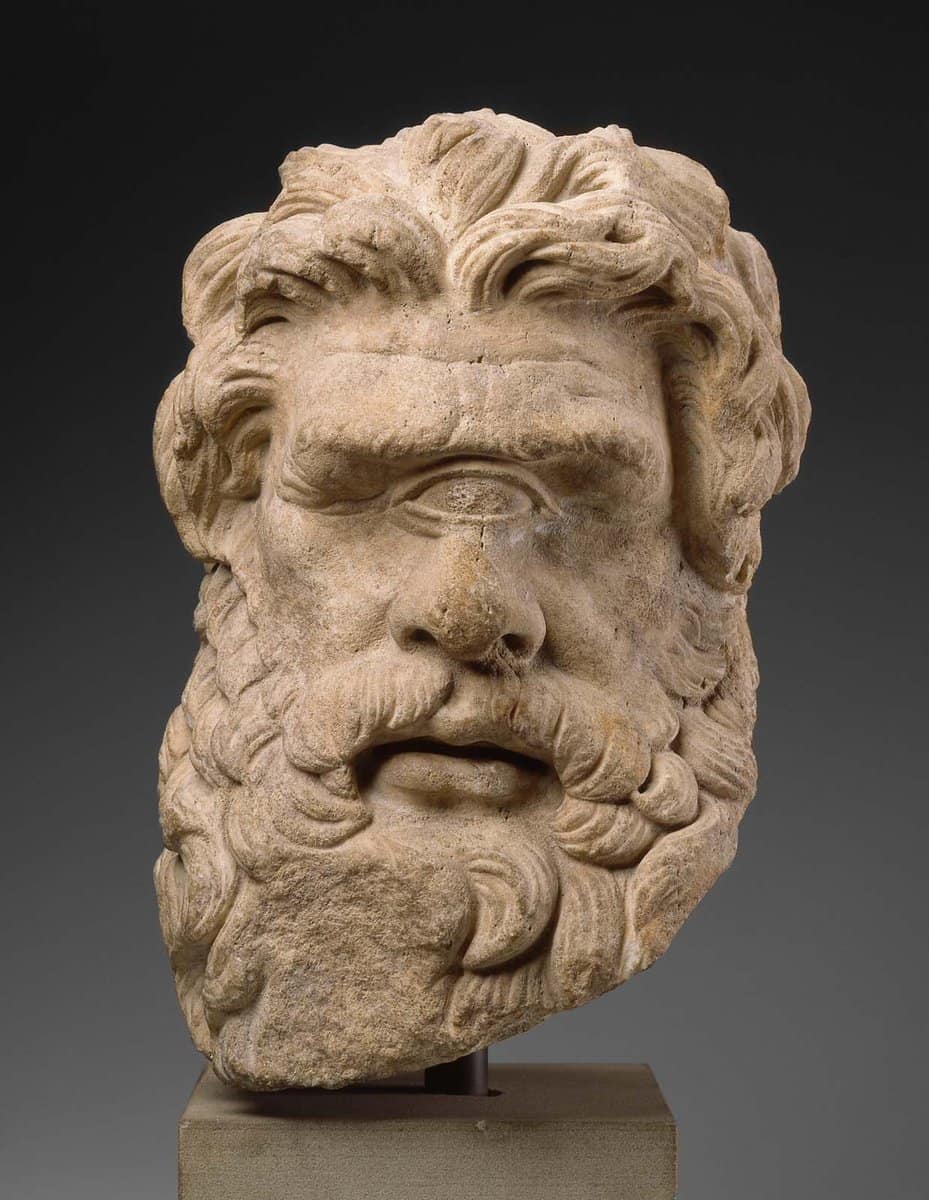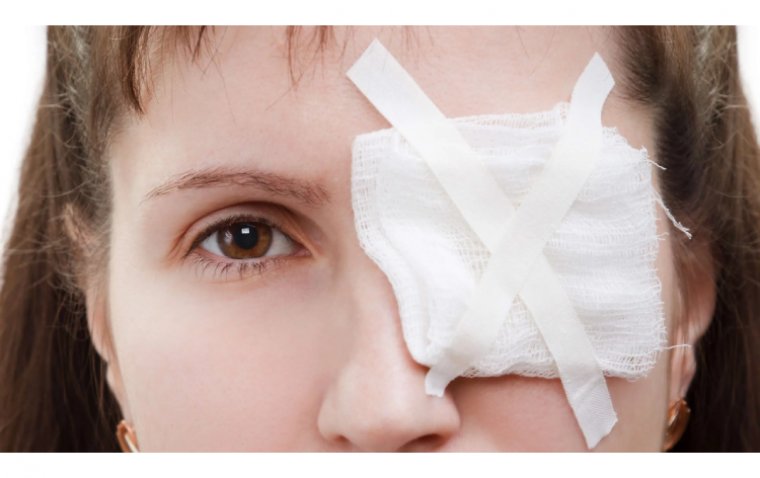
Ophthalmology In Ancient Egyptian & Greek Mythology
The Brightness of Divine Glance In Ancient Egypt
One of the first civilizations in human history is that of ancient Egypt. The pioneering work of the ancient Egyptians in the domains of art, medicine, and the mythological storytelling of scientific discoveries is well known.
The Egyptians were experts in fusing mythology and anatomy into artistic symbols and images. One of the most well-known mythologies from ancient Egypt is unquestionably the one centered on Isis, Osiris, and Horus. The tale of Isis and Osiris inspired the usage of the Eye of Horus as a symbol of protection and prosperity. The relationship between neuroanatomical structure and function in this sign is astounding. The Eye is divided into six segments artistically. From a mythical perspective, each component of the Eye is viewed as a distinct symbol.
The physiological knowledge and legendary tales were expertly incorporated into creative symbols and representations by the ancient Egyptians. The Eye is divided into six segments artistically. According to mythology, each component stands alone as a symbol. Each component is anatomically matched to the location of a specific human sensorium. The Eye of Horus was revered as a sign of protection and wealth by the ancient Egyptians for a very long time, and its significance was carried over into contemporary Egypt.
Light and fire, which were strongly associated with the Sun God Ra in ancient Egypt, were the wellspring of life and wellbeing, whereas the dark represented peril and death. Humans in profound sleep experience darkness, which causes them to visit a place filled with shadows, in a manner like to that of death. Dreams were thought to provide a look into the future and disclose a hidden realm. Vision draws attention to distant objects, yet their light can harm the eyes like a scorching flame. The most significant organ in Egyptian philosophy was the eye since it allowed for perception of the outside world. The tale of the Eye of Horus, which describes the function of each eye, has immortalized their significance.

Both could also be used to symbolize the brilliance of human mind. One represents the moonlight, which disperses the nighttime gloom, while the other represents the sunshine, which gives rise to life. Congenital or disease-related blindness was viewed as a punishment from God. As a result of his impairment, a guy would drown in doubt and darkness. People utilized drops and ointments, which were thought to ward off various insects and demons that threatened with eye illnesses, to keep the eyes from becoming blind.
The green chrysocolla and the black kohl cosmetics were carried by Egyptian eye doctors or physicians and were highly valued as prophylactic because they embodied Osiris' humours or bodily fluids. These goods were presented to the gods in order to revive their radiance and encourage the sun and moon to disperse their benevolent light. A product of human consciousness, mythology tries to make sense of observations and occurrences that fall outside the purview of organized scientific discourse. Myths are those tales that have developed in response to the big concerns that humans in earlier times grappled with but could not rationally establish as objective truth.
Ophthalmology In Ancient Greece & Greek Gods
Each people's mythology serves as the foundation for their history. Greek mythology has transcended numerous limitations of time and space among the diverse mythologies produced by various peoples. The Greek myths are universal and anthropocentric, with man at its core, and were widely transmitted by the Romans. The myths were developed during a time when scientific discourse was not as prevalent in society and oral storytelling did not use theoretical abstractions or rational conceptions. As a result, at a time before philosophy became a science, the Greek tales that capture their views on life, the law, and natural and social paradoxes contain key philosophical ideas. They also include crucial components of medical knowledge.
As an illustration, an important medical finding is concealed in the myth of Prometheus. Fire was taken from the gods by Prometheus and given to mankind. Zeus left him tied to a rock on Mount Caucasus, hung over a terrible cliff, as a punishment for this transgression. His liver was being eaten away by an eagle every day, yet every night it would regenerate. This begs the question of why the eagle did not consume another organ, such as the lungs or kidneys, or even Prometheus' flesh. Could the fact that the ancients chose the liver in this tale suggest that they knew it could regenerate unlike other organs? It is intriguing to imagine the circumstances under which they would have learned this information.

Numerous more medical terms, including ones pertaining to ophthalmology, are mentioned in Greek tales. the primary Greek texts from antiquity that discuss mythology. The chapters that dealt with vision, visual skills, the eye, blindness, injuries, and therapy, as well as innate and acquired disorders, were recognized. Since Apollo was the first ophthalmologist, the physician-healer was frequently depicted in ancient Greek mythology as having divine rank. Later on, the Hippocratic physicians would swear an oath before Apollo.
A line of heroes and brilliant doctors learned medicine from the god-healers, who used it as a form of knowledge and a talent. The first of these deified doctors to whom Apollo was genetically related was his son Asclepius, who was described as a great physician by Homer. Due of her capacity to treat eye ailments, Athena, Apollo's sister, received honors. She was referred to as "Ophthalmitis" as a result. Homer's epic poetry frequently uses the word ophthalmos, from which the name ophthalmology is derived: "Athena pointed the arrow towards the nose, close the oph-thalmos [eye], and pierced the white teeth."
Chiron, a legendary creature with a human head and torso linked to a horse's body, taught Asclepius the healing arts. His role as a teacher of medicine is related to his familiarity with and utilization of Greek earth's healing plants. The most well-known physicians in the Homeric epics, Machaon and Podalirius, were Asclepiusthen's sons who received medical training. The descriptions given of "knyzosis" in tales of external eye ailments are particularly fascinating. Homer uses the word "knyzosis" to describe an eye affliction that Athena gave to Odysseus.
While not impairing his eyesight, this gave his eyes an unpleasant appearance and caused an uncomfortable sensation. Odysseus was given this disease by the goddess in order to temporarily alter his look so that he would not be recognized upon his return to Ithaca. The individual who is blind is referred to as "blind" by Homer. Homer makes numerous allusions to amaurosis, whether it be temporary or permanent. During the fight with Aeneas, Achilles temporarily lost his vision, which Poseidon is said to have caused.

Athena removed the cloud from Diomedes' eyes so he could continue fighting after he sustained a perforating wound to his right shoulder during the battle at Troy. One of the myths about the centaur Chiron describes how he treated the blind Phoenix, who had traveled with Achilles to Troy. A false charge of seduction brought against this Phoenix by his father's concubine Phthia led to his father blinding him. Then Peleus made him king of the Dolopians after bringing him to Chiron, who gave him back his sight. Ocular trauma is one of the most frequently stated eye ailments in Homer's descriptions, maybe because these injuries include pathologies that are rather simple to comprehend. Globe rupture has been described, for instance when Menelaus slashed Peisandros with his sword.
The bones were broken and both eyes fell into the dust at Peisandros' feet as the blow was delivered to the forehead, above the bridge of the nose. Hector's charioteer Cebriones suffered a similar injury from Patroclus when he struck him with a stone across both eyebrows on the forehead. Both of Cebriones' eyes plummeted into the dirt when the frontal bone fractured.
Meaning of Cataracts in Ancient Egypt
In ancient Egypt, the word "cataract" was used to refer to a type of waterfall or rapids in a river. The term was also used to describe the eye condition in which the lens of the eye becomes cloudy, causing vision loss. It is believed that the ancient Egyptians may have associated the term with the turbulent and turbulent water of a waterfall because the cloudy appearance of the lens in a cataract can cause distorted or blurry vision, much like the turbulent flow of water can obstruct one's view. The ancient Egyptians had a highly developed medical system and were aware of the existence and effects of cataracts, and it is likely that they treated the condition with a combination of herbal remedies and surgery.
Cataracts were a significant problem in ancient Egypt, as they can cause vision loss and can ultimately lead to blindness. The ancient Egyptians placed a great emphasis on the importance of good vision, and they believed that good eyesight was a gift from the gods. As such, they may have believed that the development of a cataract was a punishment or curse from the gods, and they may have sought out treatments and remedies to try to reverse the condition. Despite their efforts, however, cataracts were often difficult to treat, and many people with the condition eventually lost their vision. Despite this, the ancient Egyptians remained committed to finding ways to prevent and treat cataracts, and their knowledge and understanding of the condition contributed to the development of modern treatments.
More Dwelling In The Spirit of Greek Mythology
Starting with the centaur Chiron, who is portrayed in mythology as a polymath, we may identify well-documented references to the transmission of medical knowledge in Greek mythology. This is demonstrated by the breadth of information that a physician should possess as well as by the fact that, as part of his general education, a physician was compelled to learn medicine. Chiron was a genuine educator who covered both the physical and spiritual needs of his pupils. The Pythagorean philosophers were influenced by the transfer of medical knowledge, which began with the gods and was subsequently passed down from father to son, and ultimately found expression in the Hippocratic oath.
Ancient Greek stories that were incorporated into the Homeric epics include recognizable descriptions of diseases and injuries, many of which are connected to the eye and its functions. The advanced anatomical findings inferred by Homer's poetry are likely to have occurred during animal dissection, clinical practice, external postmortem exams, and injuries. However, it is only reasonable to anticipate that knowledge of physiology would be restricted to the most important and obviously obvious activities. The Greek tale ofc, who had eyes covering every part of his body, raises the idea that they were aware of the human eye's visual area.

The area that one eye can view while fixed is known as the visual field. Panoptes was able to fully perceive the space that was all around him. Instead than using a figurative phrase like "eyes in the back of his skull," Panoptes' eyes are literally placed all over his body. This illustrates a knowledge of the two eyes' combined limited field of vision. The concept of visual field may have also been linked to visual acuity in the instance of Panoptes. The ability of the eye to perceive a sharp image and distinguish little details at a set distance is known as visual acuity.
Panoptes' keen ability to distinguish minute details made him a superb guard. The term "knyzosis" used to describe Odysseus' eye condition implies an eye ailment with well-known symptoms. Conditions like severe ocular trauma, significant central corneal leukomas, strabismus, and madarosis are included in the differential diagnosis. However, injuries and leukomas are ruled out by the absence of blurred vision and the presence of itching. In the case of strabismus, vision may be unaltered (as in the case of alternating tropias), but itching is not present. Madarosis is therefore thought to have been the most likely explanation for Odysseus' eye problem.
Psoriasis, generalized alopecia, rosacea, atopic or contact dermatitis, myxoedema, systemic lupus erythematosus, leprosy, and trichotillomania are only a few examples of the many local, cutaneous, systemic, and endocrine illnesses that can cause madarosis. Among the many clinical conditions connected to madarosis, blepharitis brought on by Phthirus pubis can specifically lead to eyelid deformity. Given the military setting of the epics, it is possible that Achilles' transitory amaurosis was caused by nonorganic vision loss (conversion reaction). Patients who experience a conversion reaction—previously known as hysterical blindness—react to stress in the environment. Battle exhaustion has reportedly been expressed on the battlefield as a conversion reaction of hysterical blindness.
Due to blood loss from his battle wound, Diomedes temporarily suffered bilateral blurred vision, which may have been caused by hemorrhage and might have affected his vision in two separate ways; First, people with primary or secondary vasospastic syndrome spasm in response to stimuli like cold or psychological stress. Hemorrhage is one of the clinical entities that can experience secondary vasospasm. Ocular manifestations of vasospasm include alteration of conjunctival vessels, corneal edema, retinal arterial and venous occlusions, choroidal ischemia, amaurosis fugax, transient sudden visual loss, anterior ischemic optic neuropathy, and glaucoma. The eyes are frequently involved in the vasospastic syndrome.

Second, it's probable that there was a pre-existing case of mild vertebrobasilarartery insufficiency, which was clinically expressed as momentary bilateral impaired vision due to the lowered arterial pressure brought on by the substantial bleeding. Our investigation of the legendary allusions compels us to look for the logical explanations for the intentional blinding of the Phoenix by his own father. Although there are few details in the story, they point to an acquired illness that is treatable and has a variety of plausible causes.
After thermal or minor chemical burns, ocular edema may cause reduced vision. Another possibility is the local application of atropine to Phoenix's eyes, which could result in temporary cycloplegia (paralysis of accommodation). Alkaloids like atropine are found in the plant Atropa belladonna, sometimes known as deadly nightshade. At close ranges, vision is noticeably blurry, making it impossible to focus. Finally, methyl alcohol consumption has the potential to result in blindness. Methyl alcohol is utilized in surgical spirits and methylated spirits, both of which were made by pyrolyzing wood.
Although methanol by itself is just mildly intoxicating, it is converted into formic acid, which is highly poisonous and can cause acidosis, blindness, and even death. Homer makes refers to eye congenital defects in several places, which raises similar valid questions. A congenital abnormality of the mid-face and forebrain is called holoprosencephaly. Holoprosencephaly is a complicated anomaly that affects not only the eyes but also the anterior section of the brain and the mesodermal tissues. Holoprosencephaly can be caused by problems early in development, before or during gastrulation. Holoprosencephaly is surprisingly common throughout early embryogenesis, although it is uncommon in live births because the majority of affected fetuses are stillborn as a result of abnormal brain development.
In order to create what appears to be a single eye within a single orbit in the middle of the forehead, the anatomical structures of the two eyes may be fused entirely (cyclopia) or partially (synoph-thalmia). It's possible that this apparition is what gave rise to the old Cyclopes fable. We can infer examples of evisceration from the descriptions of injuries, particularly those that were stated earlier. The Iliad's usage of the phrase "the eye went down in the dust by his feet" in reference to Peisandros and Cebriones implies that the eyeball was ruptured but that the sclera and extraocular muscles were preserved.

The phrase "rizai," which refers to the "roots" of the eye and may have been used to refer to the optic nerve, is used to describe the blinding of Polyphemus. The optic nerve is compared to roots in several ancient Greek works; for instance, Galen writes that "the nerves of the eyes appear to be some type of roots." We observe a connection between the story and the practical techniques and methods that are frequently used in the Homeric treatment regimes. The "licking" therapy instance and the Melampus tale are typical, and a medical justification can be offered.
Microorganisms must adhere to either an opening in the corneal epithelium's continuity or to the exposed corneal stroma for bacterial keratitis to develop. Treatment goals for any instance of bacterial keratitis include reducing swelling and pain, halting bacterial growth, and promoting corneal healing. Because it mechanically removed bacteria from the locations where they had attached to the cornea and necrotic stroma, therapy by licking appears to have been successful in preventing the growth of dangerous microorganisms. Additionally, it's probable that the antiseptic, anti-bacterial, and anti-inflammatory properties of the snake saliva helped to prevent bacterial keratitis. The Greek people continued to use this treatment well into the 19th century, and Professor G. Kostomiris employed it in the 1880s.
According to research on mythological connections to ophthalmology, these narratives actually conceal trustworthy medical observations made by the ancient Greeks.
This information was to eventually lead to a quest for the etiology involved in the findings and to take the form of current medical science, which honors Hippocrates as its father thanks to the development of philosophy and scientific thought by the Ionian philosophers.
(1).jpg)










